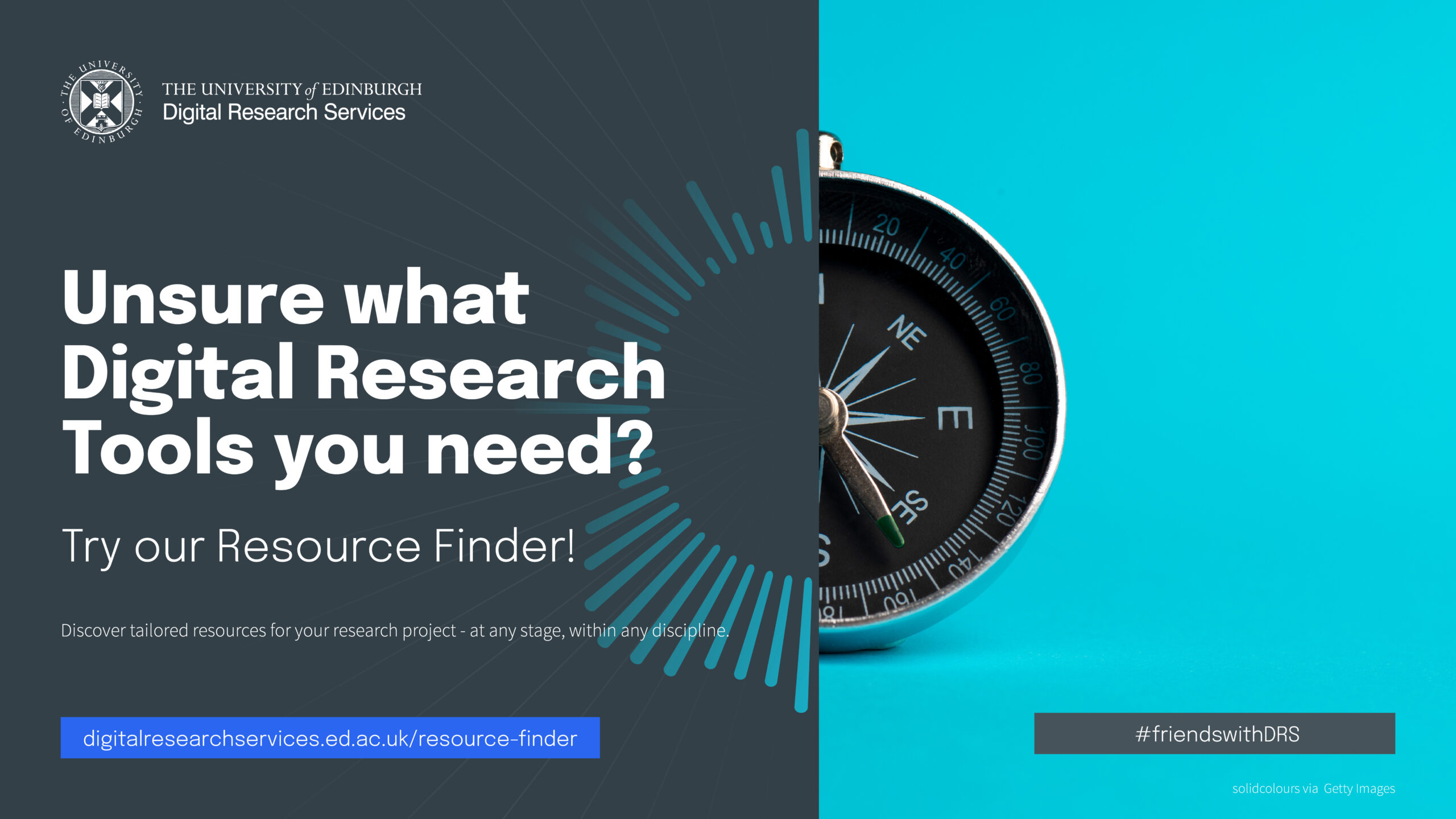Guest blog post by Dr André de Araújo Vieira, Research Facilitator – Digital Research Services – University of Edinburgh
The Digital Research Services website helps researchers find resources including components of the Research Data Service.
The new Digital Research Services website will point you to the most suited tools tailored to your research project
Digital Research Services (DRS) has just released new features on their website to assist researchers who are still unsure about which digital resources would be most appropriate for them. The new interactive tool – Resource Finder – highlights the most suitable service(s) for each project. All the users need to do is answer a series of questions. The main purposes of this new functionality are:
- To empower the user to build their own personalized toolkit;
- To give autonomy to the user in finding their way around the large portfolio of digital resources provided by the University;
- To allow the user to understand the breadth and depth of data services available to them.
Beyond helping the navigation of digital research services, DRS also intends to emphasize the importance of adopting best practices throughout the research lifecycle. Getting to know the broad range of available resources, developed with an emphasis on research excellence, is key for making informed decisions, identify the most appropriate tools and by extension have higher chances of meeting funder requirements and maximise research outputs and impact.
The new Resource Finder was released as part of a full DRS Website redevelopment, overall enhancing findability and visibility of digital tools. After an assessment in 2022, DRS intensified efforts to raise awareness of data and computing services across the University, facilitate efficient use of digital resources and to enhance the existing training materials on digital tools. One of the steps taken towards this objective was reviewing the DRS website content, design, and functionalities which led to the Resource Finder.

How does it work?
Once you enter the Resource Finder page, you will find a description of the tool, further user guidance (available under the +More info button) and the DRS research lifecycle. A You will see a list with the name of each phase of the research life cycle and associated questions, as well as guidance text showing where you can interact with the tool. Among the information provided, you will also find an explanatory video on how to use the Resource Finder. There are different ways to navigate the Resource Finder. You can use it by interacting with the colourful wheel or with the drop-down list of phases. When you start answering the questions you will see that tailored resources will appear on your right side, depending on the answers you give. 
 You can reset each phase or the full questionnaire at any point. You can also see a summary of the resources that appeared in each phase on “+Related Resources”. If you are sure that one of the services presented will not be relevant to you, you can hide it. Above all the resources, you will be able to select how you want it to be displayed. Finally, above the display options, you will find a button that allows you to copy all the outcomes of your answers, in case you want to send the link to someone.
You can reset each phase or the full questionnaire at any point. You can also see a summary of the resources that appeared in each phase on “+Related Resources”. If you are sure that one of the services presented will not be relevant to you, you can hide it. Above all the resources, you will be able to select how you want it to be displayed. Finally, above the display options, you will find a button that allows you to copy all the outcomes of your answers, in case you want to send the link to someone.
Give it a try
The Resource Finder is now available to members of the University of Edinburgh community and beyond. Give it a try and let us know your thoughts via the feedback button on the right side. We will always love to hear suggestions for improvement – whether it is for the Resource Finder or any other functionality of the website.
Other new DRS Website features
It is worth to mention that the new DRS website features and functionalities extend beyond the Resource Finder:
-
-
- Enhanced site-wide search and filtering functionality for colleges/schools;
- New pages and updated menu including the addition of News and Updates and About us pages;
- Additional options for the display or resources;
- New grouping of resources based on the type of service (tool or advice);
- Schedule an online meeting functionality.
-
